Asian Honey, Banned in Europe, Is Flooding U.S. Grocery Shelves
A third or more of all the honey consumed in the U.S. is likely to have been smuggled in from China and may be tainted with illegal antibiotics and heavy metals. A Food Safety News investigation has documented that millions of pounds banned as unsafe in dozens of countries are being imported and sold here in record quantities.
And the flow of Chinese-honey continues despite assurances from the Food and Drug Administration and other federal officials that the hundreds of millions of pounds reaching store shelves were authentic and safe following the widespread arrests and convictions of major smugglers over the last two years.
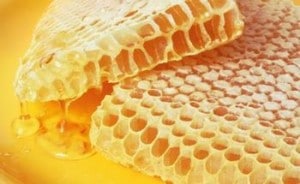 Experts interviewed by Food Safety News say some of the largest and most long-established U.S. packers are knowingly buying mislabeled, transshipped or possibly altered product so they can sell it cheaper than those companies who demand safety, quality and rigorously inspected honey.
Experts interviewed by Food Safety News say some of the largest and most long-established U.S. packers are knowingly buying mislabeled, transshipped or possibly altered product so they can sell it cheaper than those companies who demand safety, quality and rigorously inspected honey.
“It’s no secret that the honey smuggling is being driven by money, the desire to save a couple of pennies a pound,” said Richard Adee, who is the Washington Legislative Chairman of the American Honey Producers Association.
“These big packers are still using imported product of uncertain safety that they know is illegal because they know their chances of getting caught are slim,” Adee said.
Food safety investigators from the European Union barred all shipments of honey from India because of the presence of lead and illegal animal antibiotics. Further, they found an even larger amount apparently had been concocted without the help of bees, made from artificial sweeteners and then extensively filtered to remove any proof of contaminants or adulteration or indications of precisely where it actually originated.
An examination of international and government shipping tallies, customs documents and interviews with some of North America’s top importers and brokers documented the rampant laundering and that a record amount of the Chinese-honey was being purchased by major U.S. packers.
Food Safety News contacted Suebee Co-Op, the nation’s oldest and largest packer and seller, for a response to these allegations and to learn where it gets its honey. The co-op did not respond to repeated calls and emails for comment. Calls and emails to other major sellers also were unreturned.
EU Won’t Accept Honey from India
Much of this questionable honey was officially banned beginning June 2010 by the 27 countries of the European Union and others. But on this side of the ocean, the FDA checks few of the thousands of shipments arriving through 22 American ports each year.
According to FDA data, between January and June, just 24 shipments were stopped from entering the country. The agency declined to say how many loads are inspected and by whom.
However, during that same period, the U.S. Department of Agriculture reported that almost 43 million pounds entered the U.S. Of that, the Department of Commerce said 37.7 million pounds came from India, the same honey that is banned in the EU because it contained animal medicine and lead and lacked the proper paperwork to prove it didn’t come from China.
“There are still millions of pounds of transshipped Chinese-honey coming in the U.S. and it’s all coming now from India and Vietnam and everybody in the industry knows that,” said Elise Gagnon, president of Odem International, a worldwide trading house that specializes in bulk raw honey.
The FDA says it has regulations prohibiting foods banned in other countries from entering the U.S. However, the agency said last month that it “would not know about honey that has been banned from other countries …”
Adee called the FDA’s response “absurd.” He said the European ban against Indian-honey is far from a secret.
“Why are we the dumping ground of the world for something that’s banned in all these other countries?” asked Adee, who, with 80,000 bee colonies in five states, is the country’s largest producer.
“We’re supposed to have the world’s safest food supply but we’re letting in boatloads of this adulterated product that all these other countries know is contaminated and FDA does nothing.”
The food safety agency said it’s doing the best it can with existing resources and will do more when the newly passed Food Safety Modernization Act is up and running.
Where Is Our Honey Coming From?
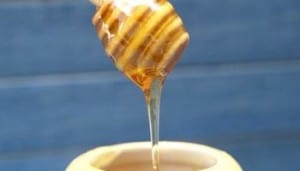 The U.S. consumes about 400 million pounds a year – about 1.3 pounds a person. About 35 percent is consumed in homes, restaurants and institutions. The remaining 65 percent is bought by industry for use in cereals, baked goods, sauces, beverages and hundreds of different processed foods.
The U.S. consumes about 400 million pounds a year – about 1.3 pounds a person. About 35 percent is consumed in homes, restaurants and institutions. The remaining 65 percent is bought by industry for use in cereals, baked goods, sauces, beverages and hundreds of different processed foods.
However, the USDA says U.S. beekeepers can only supply about a 48 percent of what’s needed here. The remaining 52 percent comes from 41 other countries.
Import Genius, a private shipping intelligence service, searched its databases of all U.S. Customs import data for Food Safety News and provided a telling breakdown:
– The U.S. imported 208 million pounds over the past 18 months.
– About 48 million pounds came from trusted and usually reliable suppliers in Argentina, Brazil, Canada, Uruguay and Mexico.
– Almost 60 percent of what was imported – 123 million pounds – came from Asian countries – traditional laundering points for Chinese honey. This included 45 million pounds from India alone.
“This should be a red flag to FDA and the federal investigators. India doesn’t have anywhere near the capacity – enough bees – to produce 45 million pounds. It has to come from China,” said Adee, who also is a past president of the American Honey Producers Association.
Why Is Chinese Honey Considered Dangerous?
Chinese honeymakers began using various illegal methods to conceal the origin of their honey beginning in about 2001. That’s when the U.S. Commerce Department imposed a stiff tariff – as much as $1.20 a pound — on Chinese-honey to dissuade that country from dumping its dirt-cheap product on the American market and forcing hundreds of U.S. beekeepers out of the business.
About the same time, Chinese beekeepers saw a bacterial epidemic of foulbrood disease race through their hives at wildfire speed, killing tens of millions of bees. They fought the disease with several Indian-made animal antibiotics, including chloramphenicol. Medical researchers found that children given chloramphenicol as an antibiotic are susceptible to DNA damage and carcinogenicity. Soon after, the FDA banned its presence in food.
“We need imported honey in this country. But, what we don’t need is circumvented honey that is mislabeled as to country of origin, or that is contaminated with antibiotics or heavy metal,” said Ronald Phipps, co-chairman of the International Committee for Promotion of Honey and Health and head of the major honey brokerage firm CPNA International.
Heavy Metal Contamination
The Chinese have many state-of-the-art processing plants but their beekeepers don’t have the sophistication to match. There are tens of thousands of tiny operators spread from the Yangtze River and coastal Guangdong and Changbai to deep inland Qinghai province. The lead contamination in some has been attributed to these mom-and-pop vendors who use small, unlined, lead-soldered drums to collect and store the honey before it is collected by the brokers for processing.
The amount of chloramphenicol found in honey is miniscule. Nevertheless, public health experts say it can cause a severe, even fatal reaction — aplastic anemia — in about one out of 30,000 people.
European health authorities found lead in honey bought from India in early 2010. A year later, the Indian Export Inspection Council tested 362 samples being exported and reported finding lead and at least two antibiotics in almost 23 percent of the test samples.
The discovery of lead in the honey presents a more serious health threat.
“The presence of heavy metals is a totally different story, because heavy metals are accumulative, they are absorbed by organs and are retained. This is especially hazardous for children,” Phipps said.
All the bans, health concerns and criticism of Indian-honey hasn’t slowed the country’s shipping of the product to the U.S. and elsewhere. In February, India’s beekeepers and its government agricultural experts said that because of weather and disease in some colonies, India’s crop would be late and reduced by up to 40 percent.
Yet two months later, on April 15 in Ludhiana, officials of Kashmir Apiaries Exports and Little Bee Group, India’s largest honey exporters, posed for newspaper photographers in front of “two full trains” carrying 180 20-foot cargo carriers with a record 8.8 million pounds headed for the export ports.
“They’re clearly transshipping it from China and I can’t believe that they are so brazen about it to put it right on the front page of a newspaper,” Adee said.
Related article: The Honey Launderers: Uncovering the Largest Food Fraud in U.S. History
Data received by FSN from an international broker in India on Friday showed that within the last month 16 shipments – more than 688,000 pounds – went from the Chinese port of Nansha in Guangzhou China to Little Bee Honey in India. The U.S. gurus of international shipping documents – Import Genius – scanned its database and found that just last week six shipments went from Little Bee to the port of Los Angeles. The honey had the same identification numbers of the product shipped from China.
Government investigators in the U.S. and Europe and customs brokers in India told FSN that previous successful criminal investigations had proven that the Chinese-honey suppliers and their brokers are masterful at falsifying shipping documents.
Each of the shipments – whether from China or India – bore an identical FDA inspection number. However, FDA’s Division of Import Operations did not respond to requests for information on how and where it issued that FDA number.
Food Safety News left several messages for the Little Bee Group to discuss the source of their honey and how they were breaking records when the rest of India’s honey producers were months behind schedule. None of the phone messages or emails were returned.
Other major Indian-honey exporters insist that India gets no honey from China. However, Liu Peng-fei and Li Hai-yan of the prestigious Chinese Academy of Agricultural Sciences disagree. In a scientific study of the impact the global financial crisis is having on China’s honey industry, the apiculture scientists wrote that to avoid the “punitive import tariffs” Chinese enterprises “had to export to the United States via India or Malaysia in order to avoid high tariffs…”
Why Hasn’t Smuggling Stopped?
The massive honey laundering scams that plagued the U.S. for more than a decade – the transshipment of Chinese honey to a second country before being reshipped to the U.S. — were presumably given a deathblow over the past two years.
During that period, Justice Department lawyers and Department of Homeland Security and FDA investigators launched a series of indictments and arrests of 23 German, Chinese, Taiwanese and American corporate officials and their nine international companies.
They were charged with conspiracy to smuggle more than $70 million worth of Chinese-honey into the U.S. by falsely declaring that the honey originated from countries other than China. That allowed them to avoid paying stiff anti-dumping charges imposed on China.
It was an impressive series of complex busts spanning three continents, and instant fodder for a great whodunit novel. But, according to some of North America’s largest producers and importers of honey, the arrests bombed as a deterrent.
“There are still millions of pounds of transshipped Chinese honey coming into the U.S.A. and it’s all coming now from India and Vietnam. Everybody in the industry knows that,” said Odem International’s Gagnon.
How Do They Get Away With It?
When it comes to honey laundering, the crooks are always trying to stay one step ahead of the criminal investigators.
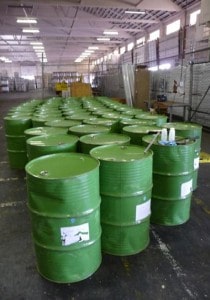 For example, when customs agents discovered that China usually shipped its honey in blue steel drums, the exporters quickly painted the drums green.
For example, when customs agents discovered that China usually shipped its honey in blue steel drums, the exporters quickly painted the drums green.
It took investigators a while to learn that often — while the drums were in port or en route at sea — the Chinese shuffled drum labels and phony paperwork showing country of origin as places that didn’t have an onerous anti-dumping tariff. The Russian Honey Federation blew the whistle on the Chinese relabeling millions of pounds as coming from Russia.
After that scam became known, the felons then shipped Chinese honey to countries like Vietnam, Indonesia, Malaysia and even Australia. There the honey was repacked, authentic local documents were issued and the honey was shipped on to the U.S. or elsewhere.
Another favorite con among Chinese brokers was to mix sugar water, malt sweeteners, corn or rice syrup, jaggery, barley malt sweetener or other additives with a bit of actual honey. In recent years, many shippers have eliminated the honey completely and just use thickened, colored, natural or chemical sweeteners labeled as honey.
However, sophisticated analysis that will match the pollen in honey to flowers from a specific geographic region is available at just two or three laboratories around the world. There are also simpler, less expensive tests to detect the telltale presence of commercial sweeteners and other adulterants that are more readily available.
A laboratory in Bremen, Germany, founded a half century ago by German beekeepers, can accurately scan honey samples for flower pollen. There is only one expert in the U.S. known to analyze pollen in honey to determine where it was actually grown and that would be at the Palygnology Laboratory at Texas A&M. The lab was created and is run by Vaughn Bryant, a forensic palynologist and Professor of Anthropology.
Melissopalynology, or pollen analysis, has been used for years by geologists seeking evidence of ancient coastal areas – often sites of major oil deposits. Scientists tracing the origins of the Shroud of Turin have identified 61 different pollens on the cloth that could only have come from around Jerusalem.
Forensic scientists have used pollen identification to help solve murder, rapes, kidnapping and at least one espionage case. Now, at least in the labs in Texas and Germany, melissopalynologists use pollen to determine – with great accuracy – the geographic area where the bees foraged for the nectar.
“If they find, for example, pollen from flowers that grow in northern latitudes – like China – but it’s found in honey ostensibly produced in tropical countries – like India, Vietnam, Malaysia and the like – you know something’s rotten or illegal,” said CPNA International’s Phipps, who also produces a quarterly, international intelligence report that monitors the country-by-country supply of honey and everyone’s exports.
To avoid detection by concerned purchasers or criminal investigators, some Chinese producers in state-of-the-art processing plants pump the alleged honey, heated and under high pressure, through elaborate ceramic filters. This ultra-filtration removes or conceals all floral fingerprints and indicators of added sweeteners or contaminants.
“The Chinese have refined methods of masking their contaminated product by ultra-filtration so their honey seems perfect. But it’s not honey anymore. There’s no color. There’s no flavor. There’s nothing. So you take this perfect product, which could be confused with honey, and you blend it with real Indian honey,” Gagnon said.
“Everyone avoids tariffs because government agents cannot test to prove it’s from China.”
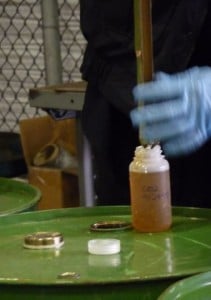 The FDA says it has sent a letter to industry stating that the agency does not consider ultra-filtered honey to be honey.
The FDA says it has sent a letter to industry stating that the agency does not consider ultra-filtered honey to be honey.
“We have not halted any importation of honey because we have yet to detect ultra-filtered honey. If we do detect ultra-filtered honey we will refuse entry,” said FDA press officer Tamara Ward.
“FDA is just not looking” was the answer that most honey brokers offered. They added that the FDA doesn’t want to find it because then the agency would have to test for it, something it is incapable of doing in its existing laboratories.
Honey experts worry that new technologies will make detection of adulterants even more difficult.
At June’s conference of the Institute of Food Technologists in New Orleans, there were hundreds of Chinese vendors working in small clusters beneath bright red banners. They offered for sale almost any spice, food-processing substance or additives a food processor might want and promises of concocting anything else they could dream of. “All FDA approved,” they emphasized to potential clients.
One salesman quickly jerked back his business card when a reporter pulled out a tape recorder to capture the man’s promises offering a “nanoparticle sweetener for honey that cannot be detected.”
Does the FDA Care?
The U.S. Departments of Customs and Border Patrol and Immigration and Customs Enforcement have dollar and cents issues to worry about because hundreds of millions of dollars in unpaid taxes and anti-dumping tariffs on Chinese imports are circumvented by the honey laundering.
“These honey crimes are not a Republican or Democratic, Liberal or Conservative issue. The country is being ripped off of millions and millions,” Phipps said.
Recent news releases by the border patrol and the FDA say they have developed an anti-smuggling strategy to identify and prevent smuggled foods from entering the United States and posing a threat to national security and consumer safety.
But at the field level, investigators with the two agencies and an agent with ICE’s Commercial Fraud Unit said the cooperation is more on paper then in practice and that the FDA continues to be the weak link. They say the FDA either doesn’t have the resources to properly do the job or is unwilling to commit them.
ICE and the border patrol can and do go after the honey launderers by enforcing the anti-dumping and tariff violation laws. But protecting consumers from dangerous honey, identifying it as adulterated and therefore illegal for importation, falls to the FDA. And many of its enforcement colleagues say the food safety agency doesn’t see this as a priority.
A Justice Department lawyer told Food Safety News that the FDA has all the legal authority and obligation it needs to halt the importation of tainted honey. He cited two sections of the agency’s regulations defining when food products are considered “adulterated.”
The regulations say: “Food is adulterated if it bears or contains a poisonous or deleterious substance which may render it injurious to health” and “damage or inferiority has been concealed.”
Those two factors pretty much sum up the health concerns that many have with the smuggled honey. But the honey industry and Congress can’t get the FDA to even come up with a legal definition of what honey is.
Eight years ago, America’s beekeepers and some honey packers petitioned FDA to issue an official definition of honey. Their concern was how to determine whether honey is bogus if there is no official standard to measure it against. The FDA did nothing.
Last Nov. 15, senators asked the food safety agency for the same thing. Again, nothing.
On Aug. 10, two members of the Senate Committee on Appropriations tried once more.
Sens. Kirsten Gillibrand (D-NY) and John Hoeven (R-ND) urged the FDA Commissioner Margaret Hamburg to issue the official definition.
Calling the lack of regulations “a food safety concern,” Gillibrand said a national standard of identity for honey is needed “to prevent unscrupulous importers from flooding the market with misbranded honey products…”
An investigator in FDA’s import section explained the agency’s refusal to develop an official definition to FSN. “If we had an official description of honey then FDA would have to inspect everything we’re importing to ensure it’s legal. That’s the last thing we want to do,” he said, but would not allow his name to be used because he wasn’t authorized to make public statements.
How Do You Stop The Illegal Flow?
Gagnon and four other major players in the honey industry have formed a voluntary group called True Source Honey. They hope it will eventually expand into an international, industry-wide program to certify the origin and quality of honey.
“We need an origin traceability program, a professional audit of both the exporters and the packers so those buying and selling honey can ensure its authenticity and quality,” said Gagnon, who is the group’s vice chairman.
Meanwhile, it’s rumored that the feds are increasing their surveillance of the large U.S. importers and not too soon, Adee and others say.
Adee likens the honey laundering to a huge auto chop shop, where the police occasionally arrest the low-level car thieves but others pop up to continue supplying the criminal operation, which authorities never go after.
“That’s what’s happening here,” Adee explained. “ICE and the other investigators have arrested a handful of the middle men, the brokers who supply the honey packers, but haven’t gone after the big operators buying the phony foreign honey.”
Adee and others interviewed by Food Safety News say there are 12 major honey packers in the U.S. and four or five that are involved with the bulk of illegal trade.
“We know who they are,” he said. “Everyone in the indu
stry knows. If these packers are allowed to continue buying this possibly tainted but clearly illegal smuggled honey, the importers will always find a way to get it to them.”
SOURCE: Food Safety News
See the top companies that are verified Made in USA:
- Food & Drinks Made in America
- American made kitchen products, knives, flatware, pots, dishes, appliances
Did you know that buying Made in USA has a bigger impact than you know? Click here for the top 4 reasons.
Learn how you can become a MAM brand ambassador and help support the Made in America Movement.

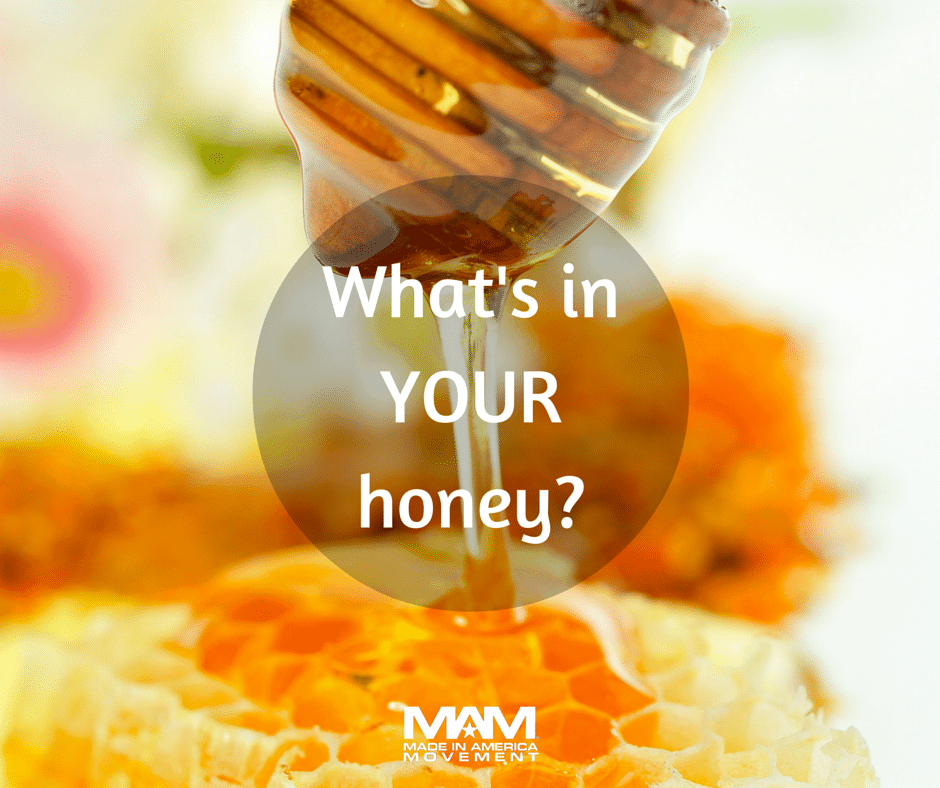

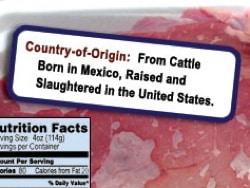
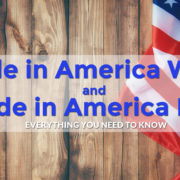
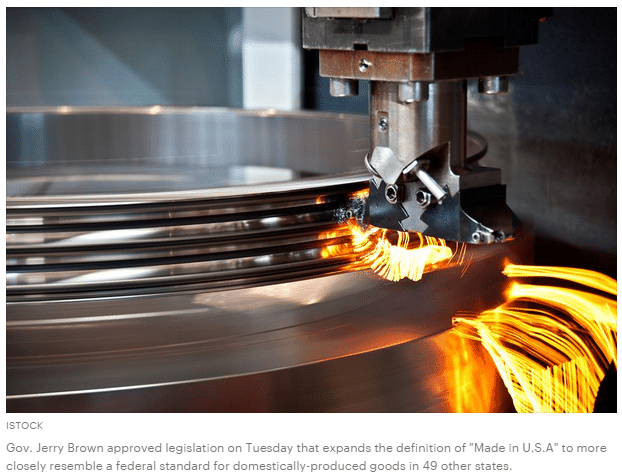



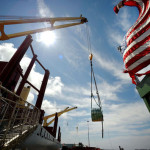
Leave a Reply
Want to join the discussion?Feel free to contribute!